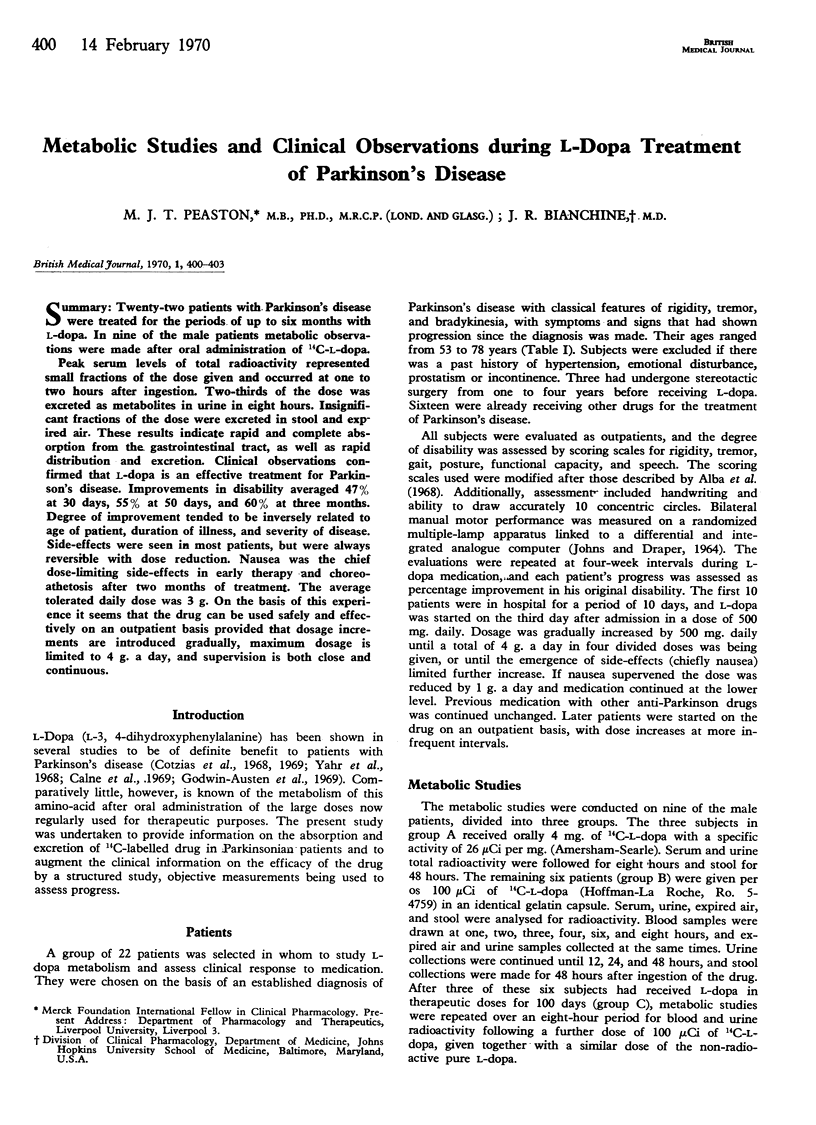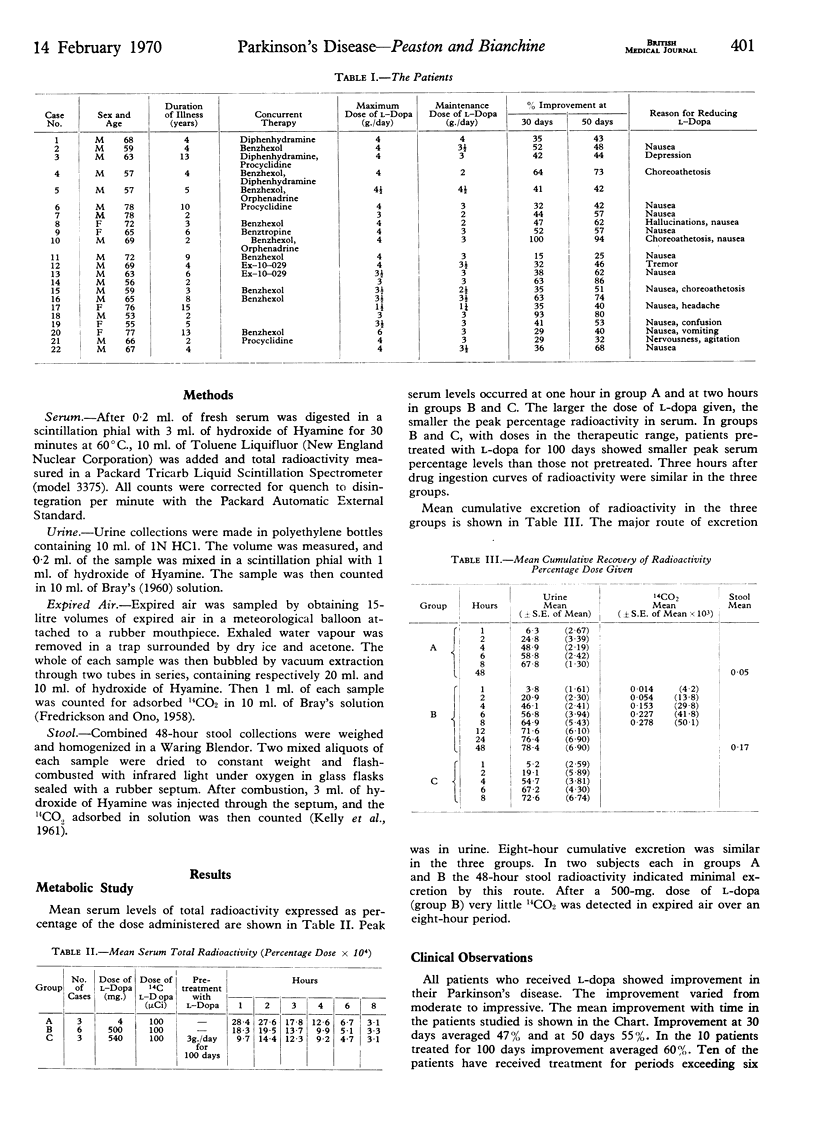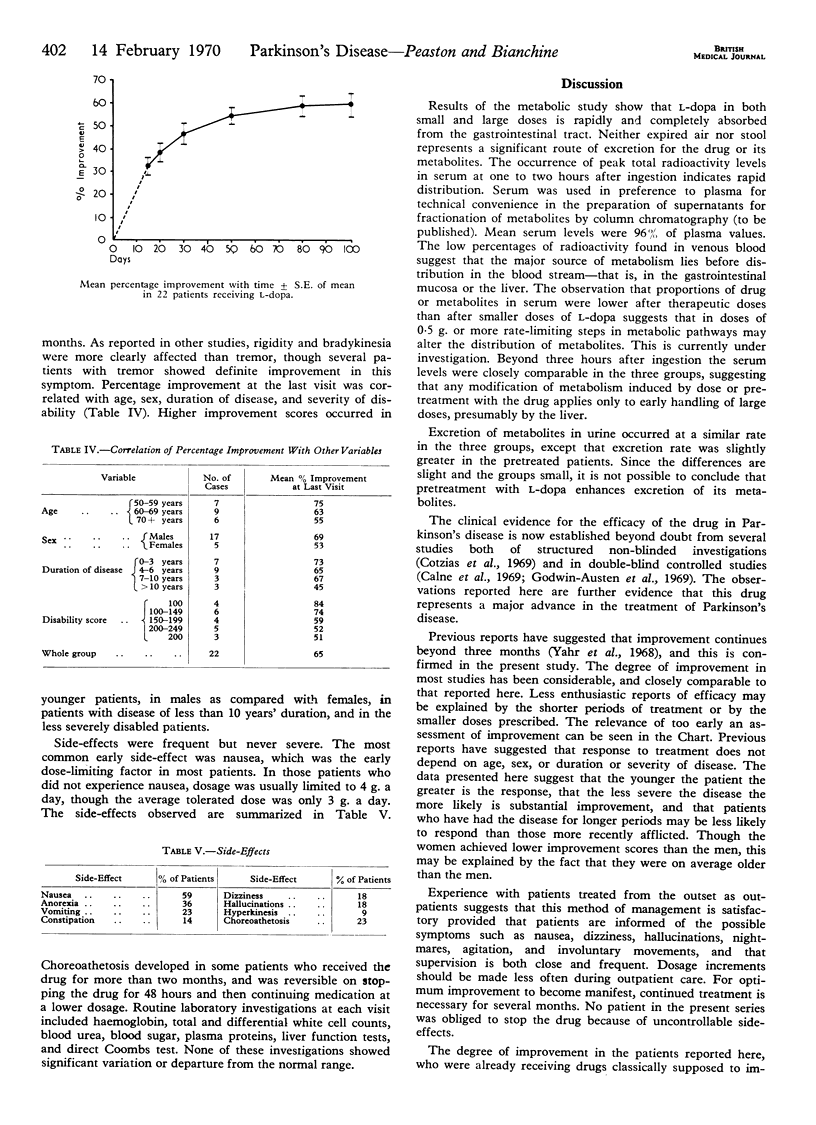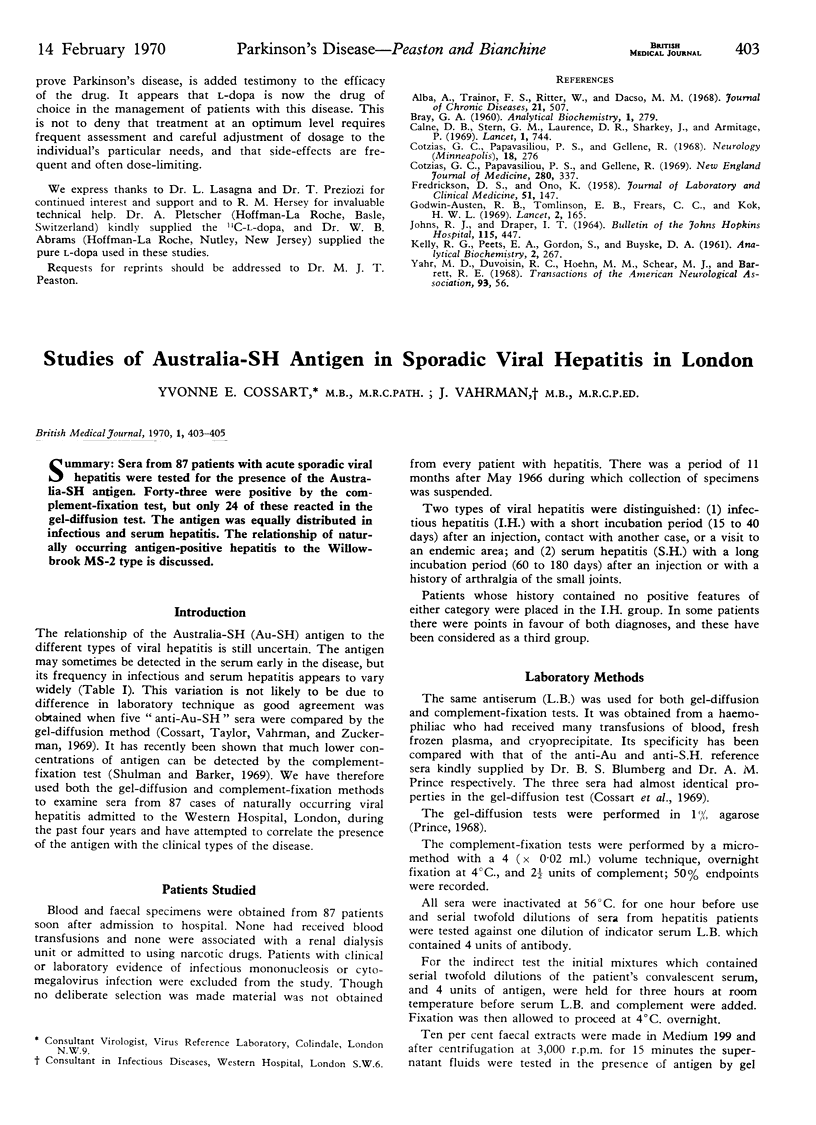Abstract
Twenty-two patients with Parkinson's disease were treated for the periods of up to six months with L-dopa. In nine of the male patients metabolic observations were made after oral administration of 14C-L-dopa.
Peak serum levels of total radioactivity represented small fractions of the dose given and occurred at one to two hours after ingestion. Two-thirds of the dose was excreted as metabolites in urine in eight hours. Insignificant fractions of the dose were excreted in stool and expired air. These results indicate rapid and complete absorption from the gastrointestinal tract, as well as rapid distribution and excretion. Clinical observations confirmed that L-dopa is an effective treatment for Parkinson's disease. Improvements in disability averaged 47% at 30 days, 55% at 50 days, and 60% at three months. Degree of improvement tended to be inversely related to age of patient, duration of illness, and severity of disease. Side-effects were seen in most patients, but were always reversible with dose reduction. Nausea was the chief dose-limiting side-effects in early therapy and choreoathetosis after two months of treatment. The average tolerated daily dose was 3 g. On the basis of this experience it seems that the drug can be used safely and effectively on an outpatient basis provided that dosage increments are introduced gradually, maximum dosage is limited to 4 g. a day, and supervision is both close and continuous.
Full text
PDF



Selected References
These references are in PubMed. This may not be the complete list of references from this article.
- Alba A., Frieda, Trainor S., Ritter W., Dacso M. M. A clinical disability rating for Parkinson patients. J Chronic Dis. 1968 Dec;21(7):507–522. doi: 10.1016/0021-9681(68)90024-6. [DOI] [PubMed] [Google Scholar]
- Calne D. B., Stern G. M., Laurence D. R., Sharkey J., Armitage P. L-dopa in postencephalitic parkinsonism. Lancet. 1969 Apr 12;1(7598):744–746. doi: 10.1016/s0140-6736(69)91751-6. [DOI] [PubMed] [Google Scholar]
- Cotzias G. C., Papavasiliou P. S., Gellene R. Experimental treatment of parkinsonism with L-Dopa. Neurology. 1968 Mar;18(3):276–277. [PubMed] [Google Scholar]
- Cotzias G. C., Papavasiliou P. S., Gellene R. Modification of Parkinsonism--chronic treatment with L-dopa. N Engl J Med. 1969 Feb 13;280(7):337–345. doi: 10.1056/NEJM196902132800701. [DOI] [PubMed] [Google Scholar]
- FREDRICKSON D. S., ONO K. An improved technique for assay of C14O2 in expired air using the liquid scintillation counter. J Lab Clin Med. 1958 Jan;51(1):147–151. [PubMed] [Google Scholar]
- Godwin-Austen R. B., Tomlinson E. B., Frears C. C., Kok H. W. Effects of L-dopa in Parkinson's disease. Lancet. 1969 Jul 26;2(7613):165–168. doi: 10.1016/s0140-6736(69)91417-2. [DOI] [PubMed] [Google Scholar]
- JOHNS R. J., DRAPER I. T. THE CONTROL OF MOVEMENT IN NORMAL SUBJECTS. Bull Johns Hopkins Hosp. 1964 Dec;115:447–464. [PubMed] [Google Scholar]
- KELLY R. G., PEETS E. A., GORDON S., BUYSKE D. A. Determination of C-14 and H3 in biological samples by Schoeniger combustion and liquid scintillation techniques. Anal Biochem. 1961 Jun;2:267–273. doi: 10.1016/s0003-2697(61)80010-9. [DOI] [PubMed] [Google Scholar]


